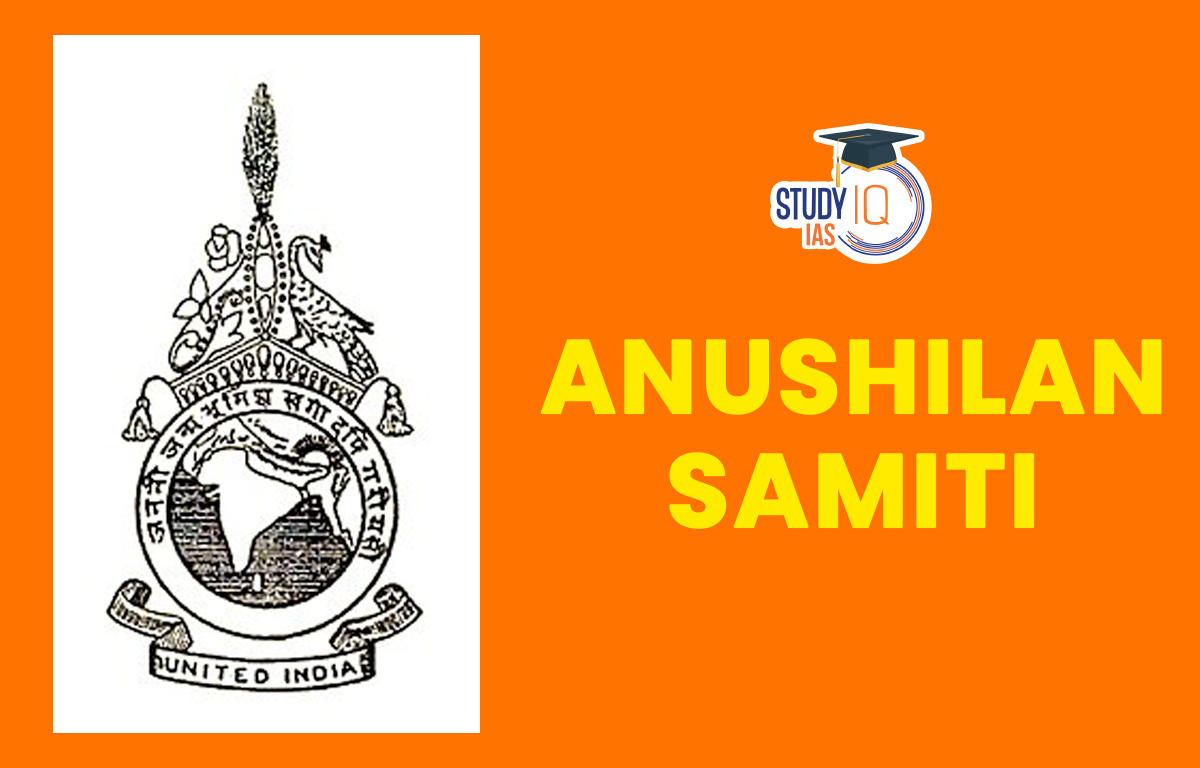Table of Contents
Anushilan Samiti
A group called Anushilan Samiti advocated using revolutionary violence to overthrow the British Empire in India during the first three decades of the 20th century. It had two branches: the Jugantar Group in Kolkata and the Dhaka Anushilan Samiti in Dhaka. The Samiti was influenced by Bankim Chandra Chatterjee’s “Anandmath,” as well as the ideas, works, and speeches of Swami Vivekanand. For candidates preparing for the UPSC, this article contains all the information they need regarding Anushilan Samiti.
Anushilan Samiti Background
On March 24, 1902, Calcutta-based lawyer Pramathanath Mitra founded the Anushilan Samiti. It was led by Barindra Kumar Ghosh, Sri Aurobindo Ghosh’s younger sibling. In particular, Aurobindo Ghosh (Sri Aurobindo), Bhupendra Natha Datta (Swami Vivekananda’s sibling), Deshabandhu Chittaranjan Das, Surendranath Tagore, Pulin Bihari Das, Sarala Devi, Rash Behari Bose, Jatindranath Mukherjee (Bagha Jatin), Sachindranath Sanyal, Jatin.
The Samiti published “Bhavani Mandir” (Temple of Goddess Bhavani) in 1905, which included a thorough plan for constructing a religious sanctuary as the focal point of revolutionary operations in a remote location. In order to instill the required revolutionary mindset among Indians, Aurobindo Ghosh and Bipin Chandra Pal launched the Bengali nationalist weekly “Jugantar” (New Era) and its English counterpart “Bande Mataram” in March 1906. Both publications openly preached armed revolt.
Read about: Surat Split
Anushilan Samiti Objective
It urged its followers to recruit Indian soldiers for the revolutionary societies and obtain weapons from outside powers. They advocated military training and outlined guerrilla combat strategies and tactics in “Vartaman Rananiti,” which was published in 1907.
Anushilan Samiti was a well-known covert revolutionary organisation that operated out of Bengal in the 20th century with the goal of removing colonial authority and igniting India’s independence movement. Aurobindo Ghose, Satish Chandra Pramatha Mitra, and Sarala Devi founded the Anushilan Samiti, one of the many distinguished organisations from the Bengali region.
Read More: Socio-Religious Reform Movements
Anushilan Samiti Leaders
Anushilan Samiti was linked to legends like Deshabandhu Chittaranjan Das, Surendranath Tagore, Jatindranath Banerjee, and Bagha Jatin. Hedgewar had graduated from the Samiti as well. Anushilan Samiti was able to acquire popularity in Bengal thanks to the nationalist writings and publications of Aurobindo and Barin, such as Bande Mataram and Yugantar. Anushilan Samiti graduate Keshav Baliram Hedgewar founded the Rashtriya Swayamsevak Sangh (RSS).
Read about: List of Indian National Congress Sessions
Anushilan Samiti Revolutionary Activities
The Samiti worked in conjunction with other revolutionary groups both in India and overseas. It was headed by the nationalists Aurobindo Ghosh and his brother Barindra Ghosh, who was influenced by ideologies such as Italian nationalism and Kakuzo Okakura’s Pan-Asianism. The Samiti participated in a number of well-documented instances of revolutionary attacks against the British government and interests in India, including the first assassination attempts on British Raj officials.
These were followed by the 1912 attempt on the Viceroy of India’s life and the Seditious Conspiracy during World War I, both of which were headed, respectively, by Rash Behari Bose and Jatindranath Mukherjee.
Read More: World War 2
Anushilan Samiti UPSC
The British made a number of actions to put an end to the Samiti’s revolutionary activities after becoming alarmed by them. To cope with them, the Calcutta Police established the Special Branch. The Defense of India Act 1915 was passed as a result of their efforts as well as those of the Ghadar Party. The harsh Rowlatt Act was enacted to address them following World War 1.





















 WhatsApp
WhatsApp